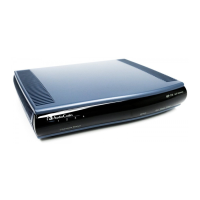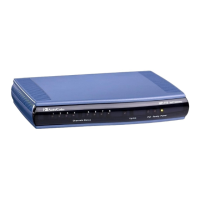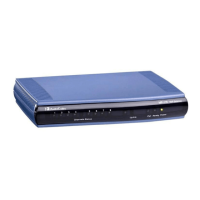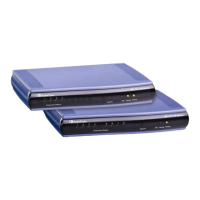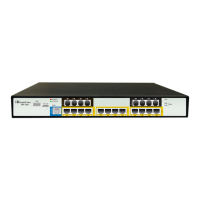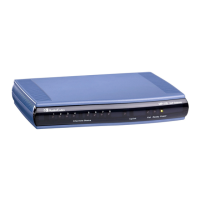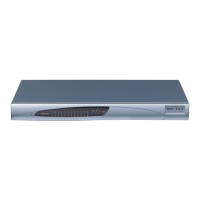Each PBX extension registers separately (a REGISTER message is sent for each entry
only if AuthenticationMode is set to Per Endpoint) using the"Global phone number" in the
From/To headers. The REGISTER messages are sent gradually. Initially, the device sends
requests according to the maximum number of allowed SIP dialogs (configured by the
parameter NumberOfActiveDialogs). After each received response, the subsequent
request is sent. Therefore, no more than NumberOfActiveDialogs dialogs are active
simultaneously. The user name and password are used for SIP Authentication when
required.
The calling number of outgoing Tel-to-IP calls is translated to a "Global phone number"
only after Tel-to-IP manipulation rules (if defined) are performed. The Display Name is
used in the From header in addition to the "Global phone number". The called number of
incoming IP-to-Tel calls is translated to a PBX extension only after IP-to-Tel manipulation
rules (if defined) are performed.
31.2 Loading Software Upgrade Key
The device is supplied with a Software Upgrade Key, which determines the device's
supported features, capabilities, and available resources. The availability of certain Web
pages depends on the loaded Software Upgrade Key. You can upgrade or change your
device's supported features by purchasing a new Software Upgrade Key to match your
requirements.
The Software Upgrade Key is provided in string format in a text-based file (.out). When you
load a Software Upgrade Key, it is loaded to the device's non-volatile flash memory and
overwrites the previously installed key.
You can load a Software Upgrade Key using one of the following management tools:
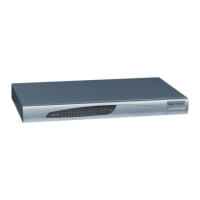
